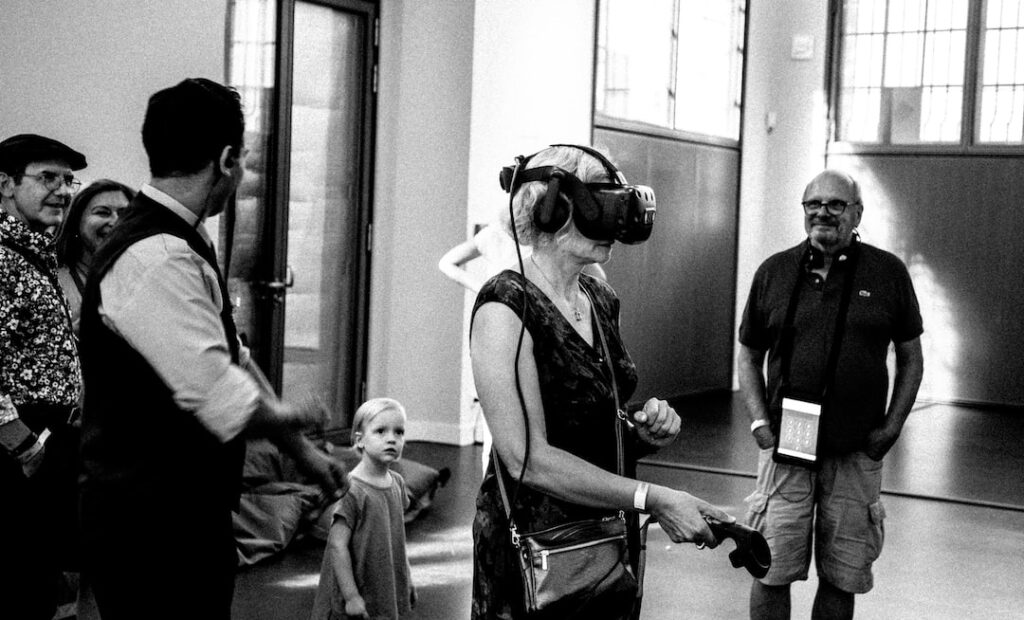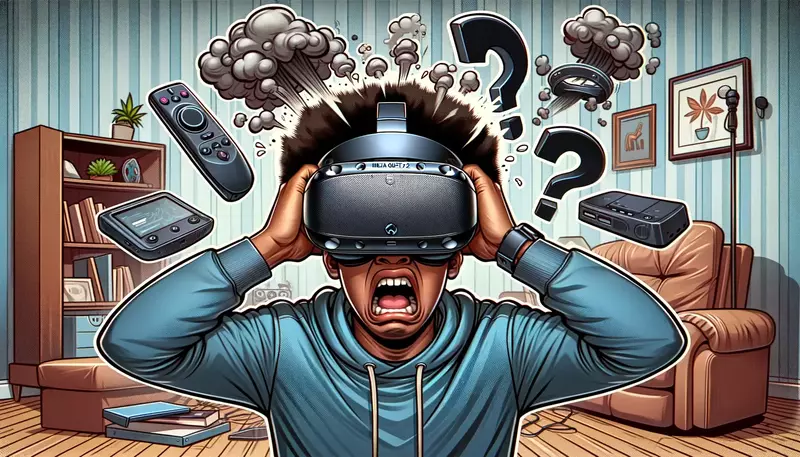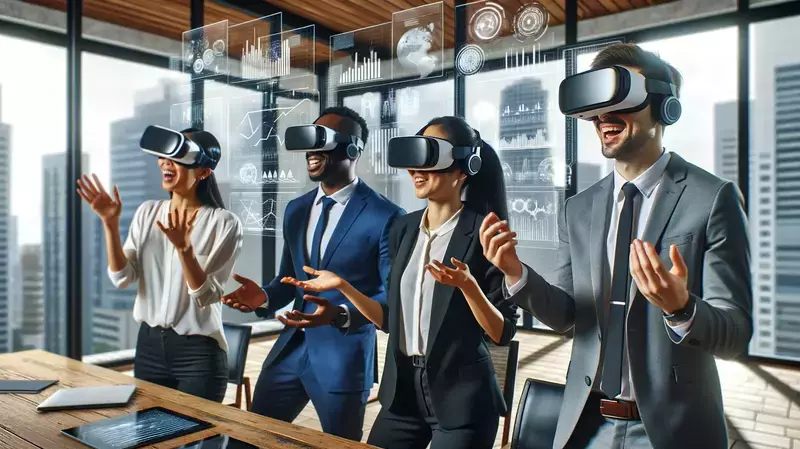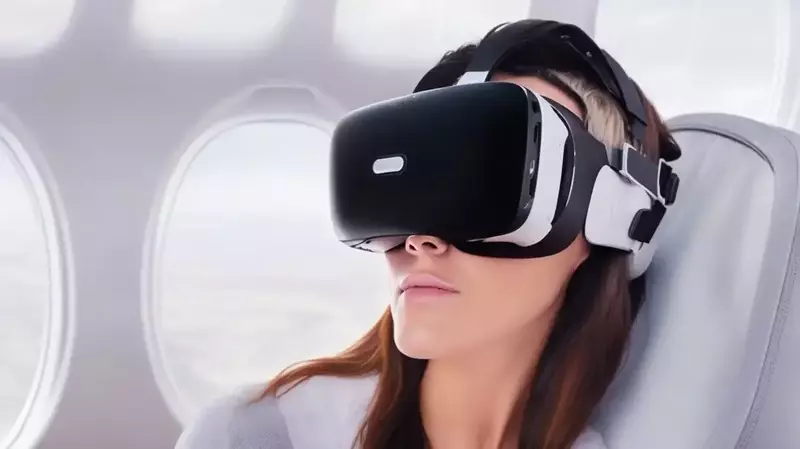This site contains affiliate links to products, and we may receive a commission for purchases made through these links.
The inquiry of “what is augmented reality vs virtual reality” becomes more important as technology progresses. Both AR and VR are immersive technologies that offer unique experiences and have a wide range of applications across various industries.
In this blog post, we will delve deeper into these two innovative fields.
We’ll begin by understanding the basics of AR and VR, as well as comparing their immersion levels in order to grasp their key differences. Next, we’ll explore how both technologies are being utilized in gaming, education, and mental health treatment to revolutionize user experiences.
Lastly, we’ll discuss mixed reality – an emerging concept that merges aspects of both augmented reality and virtual reality for seamless integration – examining its potential use cases in daily life.
By the end of this post, you will have acquired an in-depth knowledge of augmented reality and virtual reality and their implications on our digital world.

Augmented Reality vs Virtual Reality
Explore the key differences between augmented reality (AR) and virtual reality (VR), two powerful technologies that offer unique benefits and downfalls.
While VR provides a complete immersion into a digital world, AR combines digital elements with real-world environments through computer-generated content overlaying physical objects or surroundings.
Understanding the Basics of AR and VR
The main difference between augmented reality and virtual reality lies in their approach to altering our perception of the world.
Augmented reality uses technology like Google Lens, which overlays digital information onto our view of the real environment, enhancing it with additional details such as live view directions or product information.
In contrast, virtual reality creates an entirely simulated environment using devices like head-mounted displays (Oculus Rift) that immerse users in a fictional realm where they can interact with virtual objects.
- Augmented Reality: Integrates digital data into your view of the real world by superimposing images on top of what you see around you.
- Virtual Reality: Transports users to a completely different environment by replacing their vision with computer-generated imagery, creating an immersive experience within a simulated space.
Comparing Immersion Levels in Both Technologies
In terms of immersion levels, there is no doubt that VR offers more intense experiences than AR due to its ability to transport users into fully realized virtual worlds.
Though VR offers more immersive experiences, it can lead to feelings of disconnection from reality, making AR a better option as it allows users to remain grounded in their physical environment while still enjoying digital enhancements.
AR, on the other hand, allows users to remain grounded in their physical surroundings while still benefiting from digital enhancements.
Virtual reality applications typically require dedicated VR headsets, which are often bulky and expensive. These devices also tend to be tethered to powerful computers or gaming consoles for optimal performance.
In contrast, augmented reality experiences can be accessed using everyday smartphones and tablets equipped with cameras and sensors capable of recognizing objects in the environment.
It is critical for those involved to comprehend the advantages and constraints of both technologies when selecting which platform will work best for them.
Comparing augmented and virtual reality is essential to comprehend, since the two technologies provide distinct levels of engagement. With this knowledge in hand, let us now explore the applications of AR & VR across various industries.
This article looks into the distinctions between AR and VR, displaying their particular advantages and downsides. While VR provides complete immersion into a digital world, AR combines digital elements with real-world environments through computer-generated content overlaying physical objects or surroundings. It is essential that those creating and utilizing these technologies comprehend the distinctions between them to ascertain which one best suits their purposes.
Applications of AR & VR Across Industries
Both augmented reality and virtual realities have shown potential across various industries, from gaming to education to mental health treatments.
In this section, we will explore some specific applications where these immersive experiences can enhance learning, increase efficiency within business processes, or provide therapeutic interventions for psychological disorders such as anxiety.
Gaming experiences enhanced by AR & VR technology
The gaming industry has been one of the earliest adopters of augmented reality (AR) and virtual reality (VR) technologies.
These innovative tools have transformed traditional video games into fully immersive experiences that engage players on a whole new level.
For example, popular titles like Pokemon Go and Harry Potter: Wizards Unite utilize AR technology to overlay digital elements onto real-world environments, allowing players to interact with their surroundings in novel ways.
VR headsets such as Oculus Rift and HTC Vive immerse gamers in detailed virtual realms, enabling them to navigate freely and interact with objects using handheld controllers.
Education advancements using immersive learning tools
AR and VR tech are also causing a stir in the realm of education, providing learners with innovative ways to comprehend intricate ideas while raising involvement and storage.
By providing students with interactive simulations that mimic real-life scenarios or historical events,immersive learning tools help learners better understand complex concepts while increasing engagement and retention.
For instance, medical students can practice surgical procedures using VR simulations that closely resemble actual operating rooms, while history buffs can explore ancient civilizations through AR-enhanced museum exhibits.
- zSpace – A platform that combines elements of AR and VR to create interactive learning experiences for K-12 education.
- Nearpod – An educational tool that integrates virtual reality field trips into classroom lessons to engage students in immersive learning environments.
Mental health treatment breakthroughs with interactive therapies
Beyond gaming and education, augmented reality and virtual reality technologies are also being utilized as therapeutic tools within the mental health field.
By creating controlled environments where patients can confront their fears or anxieties in a safe manner, therapists are able to provide more effective treatments for conditions such as post-traumatic stress disorder (PTSD) or phobias.
One notable example is the use of VR exposure therapy, which has shown promising results in helping individuals overcome various anxiety-related disorders by gradually exposing them to triggering situations within a simulated environment under professional guidance.
The applications of AR & VR across industries have been widely accepted and utilized, proving to be beneficial in various ways.
As we move into the next section, let’s take a look at how mixed reality combines elements from both augmented and virtual realities for an even more immersive experience.
Augmented and virtual reality tech have a range of applications, from gaming to education to therapeutic interventions. AR enhances real-world environments while VR transports users into detailed virtual worlds where they can interact with objects using handheld controllers. Immersive learning tools help learners better understand complex concepts while increasing engagement and retention, whereas therapists use controlled environments created by AR/VR technology for more effective treatments of conditions such as PTSD or phobias.
Mixed Reality – The Best of Both Worlds?
Discover mixed reality (MR), an emerging technology that combines aspects of both augmented reality and virtual reality allowing instinctive interaction with data thus eliminating screen-based work altogether.
This revolutionary approach could change how we interact with information moving forward, offering limitless possibilities across various industries.
How MR Merges Aspects of AR & VR for Seamless Integration
Mixed reality blends the physical and digital realms, creating a novel experience where individuals can engage with virtual objects in real-time while being aware of their surroundings.
By merging elements from both AR and VR technologies, mixed reality offers an enhanced level of immersion without completely isolating users from their actual environment.
The key to achieving this seamless integration lies in advanced sensors and cameras that track user movements, gestures, and interactions within the space.
These inputs are then combined with sophisticated algorithms to create realistic holographic images or 3D models that appear as if they exist within our physical world.
For more info on mixed reality, have a look at this helpful piece in Wired.
Potential Use Cases for Mixed Reality in Daily Life
- Gaming: MR takes gaming experiences to new heights by blending digital characters into players’ real-world environments. Imagine playing your favorite game where you physically interact with virtual objects or team up with friends who appear as avatars right beside you.
- Educational Tools: With mixed reality’s ability to overlay digital content onto physical objects or spaces, learning becomes interactive and engaging like never before. Students can explore complex concepts through hands-on experiences, such as dissecting virtual animals or examining historical artifacts up close.
- Healthcare: MR technology has the potential to revolutionize medical training and patient care. Surgeons can practice procedures on holographic patients before performing actual surgeries, while therapists can create immersive environments tailored to individual needs for more effective treatments. Learn more about how mixed reality is changing healthcare in this HealthTechZone article.
- Retail & Marketing: Mixed reality offers innovative ways for businesses to showcase products and services by blending digital content with physical spaces. Customers can virtually try on clothes or preview furniture arrangements within their homes before making a purchase decision.
In conclusion, mixed reality represents an exciting fusion of augmented reality and virtual reality technologies that have the potential to reshape our interactions with information across various industries.
As MR continues to evolve, we can expect even more groundbreaking applications that will enhance our daily lives in unimaginable ways.
Mixed reality is an emerging technology that combines aspects of both augmented and virtual reality. It offers limitless possibilities across various industries, including gaming, education, healthcare, retail and marketing by blending digital content with physical spaces for a more immersive experience. The key to achieving this seamless integration lies in advanced sensors and cameras that track user movements and interactions within the space.
Frequently Asked Questions What is Augmented Reality vs Virtual Reality
What is augmented virtual vs virtual reality?
Augmented reality (AR) overlays digital content onto the real world, enhancing users’ perception of their surroundings.
Virtual reality (VR), on the other hand, immerses users in a completely simulated environment, disconnecting them from the physical world.
Both technologies offer unique experiences and applications across various industries.
What is an example of augmented reality vs virtual reality?
An example of augmented reality is Pokemon GO, where players interact with digital creatures overlaid on real-world locations using their smartphones.
In contrast, a virtual reality example would be playing a game like Beat Saber using VR headsets such as Oculus Rift S to fully immerse themselves in a 360-degree gaming environment.
What is augmented reality vs virtual reality vs MR?
Mixed Reality (MR), also known as hybrid or extended-reality (XR), combines elements of both AR and VR to create immersive experiences that blend digital objects with the physical world.
Users can interact with these objects seamlessly while still being aware of their surroundings.
What is augmented reality in simple words?
In simple terms, augmented reality enhances our perception by overlaying computer-generated images or information onto our view of the real world through devices like smartphones or AR glasses.
This technology enables us to experience interactive digital content integrated into our everyday lives.
!! For more information about the different VR headsets on the market, check out this product specification list.
Final Thoughts
After learning about augmented reality vs. virtual reality, it’s clear that both technologies have their unique strengths and applications. While VR offers complete immersion in a digital world, AR enhances the real world with digital overlays. Both have been used to revolutionize industries like gaming, education, and mental health treatment.
However, mixed reality may be the future of immersive technology by seamlessly merging aspects of both AR and VR for an even more realistic experience. The potential use cases for MR are endless and could transform daily life as we know it.
If you’re interested in exploring the possibilities of augmented reality vs virtual reality or mixed reality further, check out Project Pursuit Meta! Our crew is devoted to devising fresh ideas with the most advanced tech.

Espen
Espen is the Director of PursuitMeta and has written extensively about Virtual Reality and VR Headsets for years. He is a consumer product expert and has personally tested VR Headsets for the last decade.





Leave a Reply